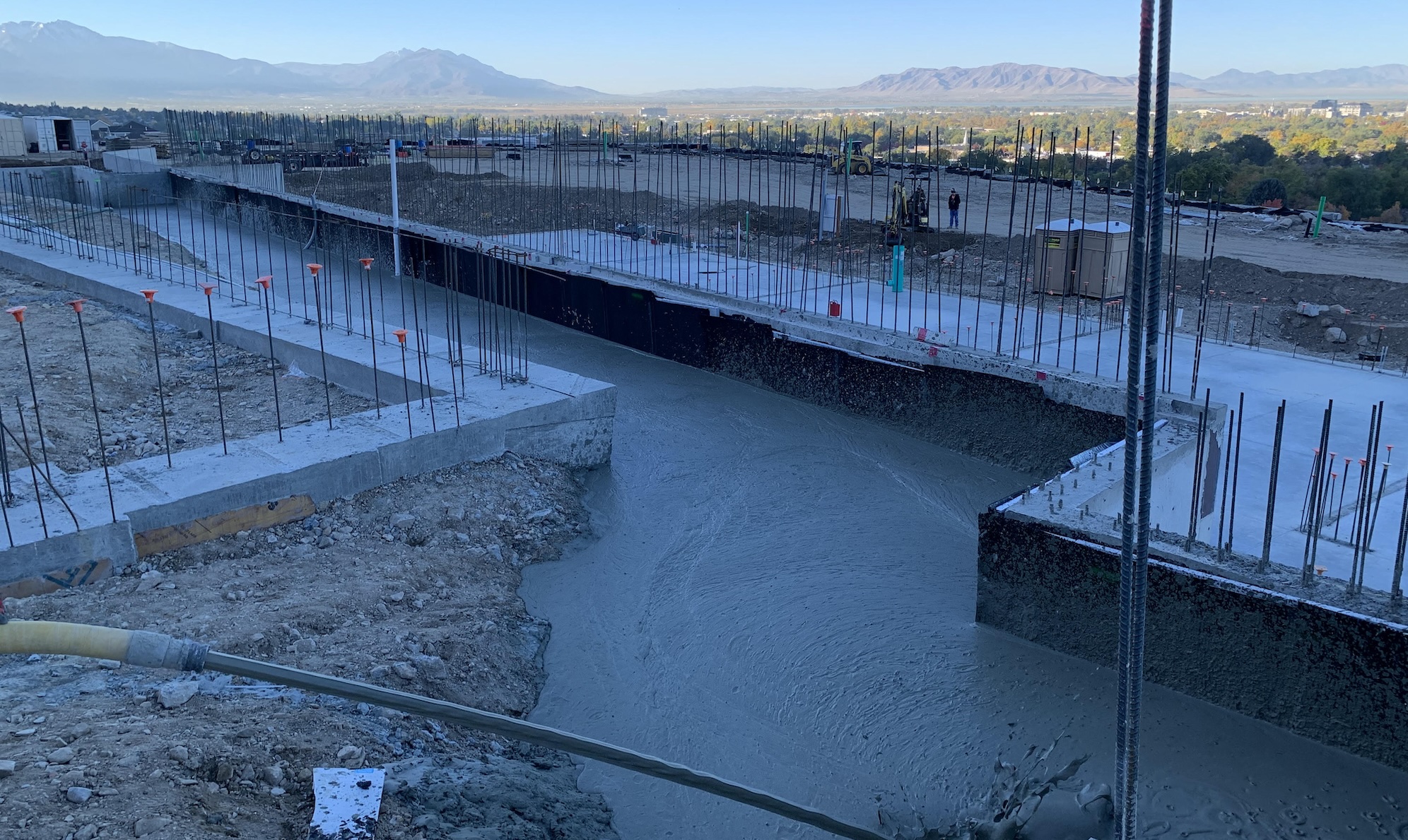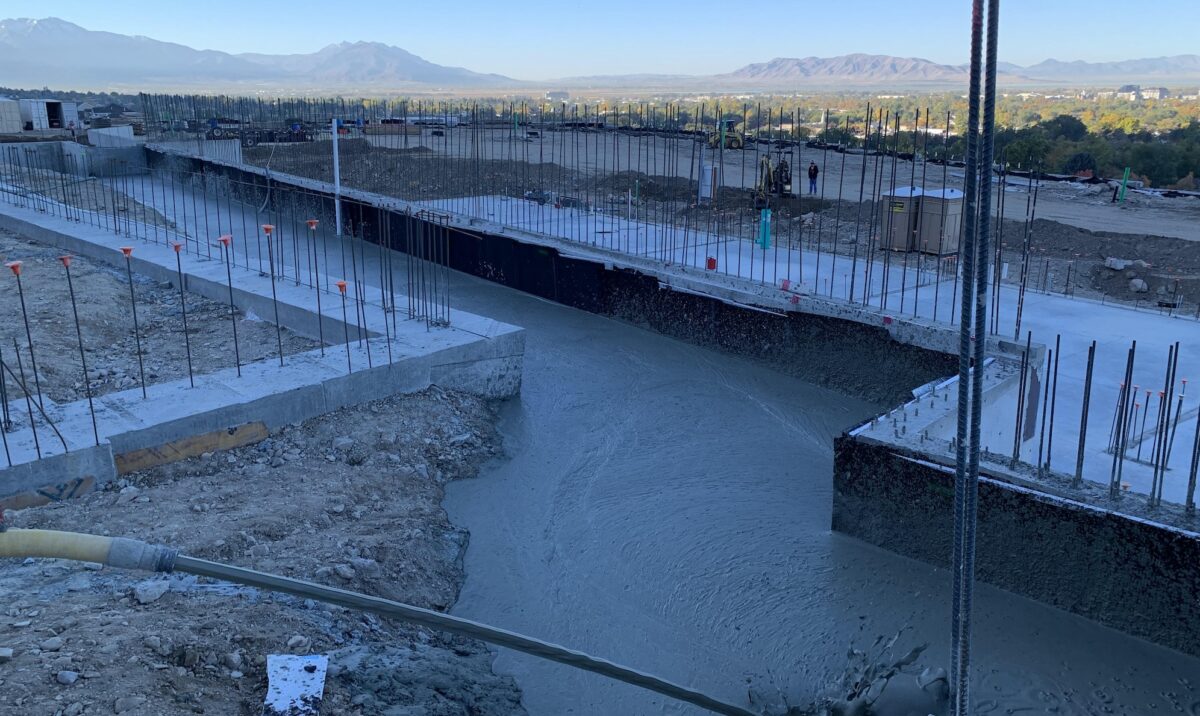Wasatch Elementary School
- Category
- Engineered Fill, Flowable Fills, Lightweight Cellular Concrete
Wasatch Elementary School
Project Location
Provo, UT
The Project
Innovative Lightweight Backfill Solution for Hillside School Construction in Utah
The rapid population growth in Utah has necessitated the reconstruction of existing schools and the construction of new ones throughout the state. In the Provo valley, where available land is scarce, the construction of Wasatch Elementary School presents a unique challenge. Situated up the hill from the old school, directly under the iconic Y on the mountain, the new school boasts a breathtaking view of the valley. To accommodate the site’s hillside location, the design incorporates retaining foundation walls, which introduce the need for lightweight backfill to reduce lateral and dead loads while ensuring adequate drainage.
The solution to this challenge involved breaking up the backfill into pourable cells that could be poured in lifts. After the installation of a waterproofing and drain mat system, the construction team commenced the process. Leveraging a mobile batch plant, the team strategically staged the materials in a single area adjacent to the site access road for efficient deliveries and pouring across all areas. This staging approach allowed other construction activities to progress seamlessly without any interruptions.
The successful pour garnered significant attention from engineers and contractors, who requested site walks during the process to gain a deeper understanding of its implementation for their own projects. These industry professionals affirmed that this foundation design trend is becoming more prevalent in schools and commercial buildings. They unanimously agreed that Lightweight Cellular Concrete (LCC) is an effective and cost-efficient solution for flowable lightweight fill, eliminating the need for compaction.
By adopting this innovative lightweight backfill solution, the construction of the hillside Wasatch Elementary School in Utah showcases the suitability of LCC in addressing the challenges of constructing schools in hilly areas. This approach not only ensures the reduction of lateral and dead loads but also promotes efficient drainage, making it a compelling choice for future projects in the education and commercial sectors.


